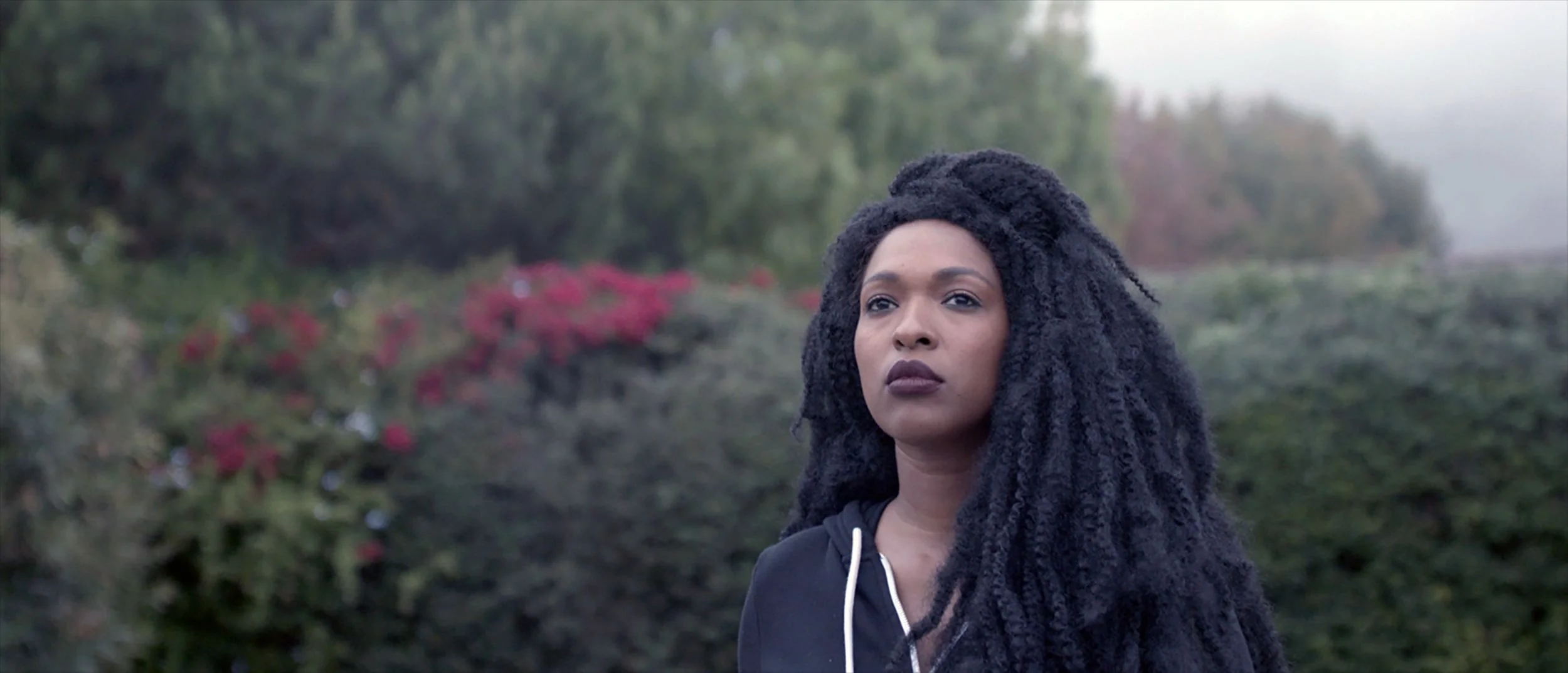THE TUBA THIEVES builds an immersive sense of place
The Tuba Thieves
Written and Directed by Allison O’Daniel
Starring Nyeisha "Nyke" Prince, Russell Harvard, Geovanny Marroquin, and Warren “Wawa” Snipe
Unrated
Runtime: 91 min
Opening March 15 in Brooklyn, March 29 in Minneapolis, and premiering on PBS’ Independent Lens and PBS Passport May 20
by Daniel Pecoraro, Staff Writer
The Tuba Thieves is a film that defies any neat categorization. It’s not quite a documentary, though it has a sizable number of real-life individuals either interviewed or engaging in reenactments. It’s not quite a narrative fictional feature, given the real-life component and the thinner storylines of its characters. It’s not quite about Los Angeles, though that’s where most of the film is set and delves into its history a bit. It’s not even about the eponymous tubas or about the titular thieves, really. In essence, Allison O’Daniel’s piece is an atmospheric piece on sound, music, and d/Deaf culture within and beyond these spheres.
The film mostly takes place between 2011 and 2013 in LA, a period when a dozen schools in Southern California had tubas stolen from bandrooms. O’Daniel intercuts diegetic radio coverage of the thefts (including former Los Angeles Times journalist Sam Quinones, who later appears on screen) with reenactments, faceless thieves in the night and morning-after band directors arriving at ransacked rooms. The absence of the lowest octaves in the bands (there were a few sousaphones stolen too) is found both aurally and visibly, the tuba players forlornly sitting while their bandmates perform. There are no attempts to answer the obvious questions (who stole the tubas and how) or the not-so-obvious ones (what the thieves ended up doing with these instruments, and why). O’Daniel simply embraces the absence.
She also emphasizes the omnipresence of sound, and noise, in our daily lives. Audio descriptions burned into each shot, at times including a decibel meter, make that clear. The impact of supersonic planes and jet engines in general is a throughline of the film, especially focusing on the history of LAX. (One of the narrative plots focuses on Geovanny Marroquin, the drum major at Centennial High School in Compton.) There’s also a touching scene on Chalino Sánchez, the narcocarrido singer-songwriter whose tuba-inflected music was heard primarily in the streets from cars on Pacific Avenue in Long Beach, his songs largely unplayed on the radio. There’s the sound (and the smog) from myriad wildfires. And there’s the regular presence of cars, helicopters, and my personal nemesis: the leaf blowers.
But O’Daniel’s main focus is on d/Deaf history, especially as it connects to music. The narrative core of the film is the relationship between Nyke (Nyeisha “Nyke” Prince) and Nature Boy (Russel Harvard). Nyke works at a recording studio — we first meet her engineering a jazz trio — and (both in real life and the film) learned to drum by memorizing visual cues and rhythms. She and Nature Boy live separate lives through much of the film, an absence that clearly makes their hearts grow fonder. Nyke’s father, Zamboni operator Arcey (Warren “Wawa” Snipe) further builds the storyline as a connector for scenes at the rink, the jazz club, and Nyke’s home. This connection between d/Deaf life and music, perhaps a surprising topic for non-disabled viewers, is extended further with a reenactment of a punk concert at San Francisco’s Deaf Club and a dramatized oral history of Prince’s free concert for students at Washington’s Gallaudet University. (The looks back at the nexus of silence, sound, vibration, and belonging are rounded out with a reenactment of John Cage’s first performance of 4’33” in Woodstock.)
I’m not sure if the narrative components end up working in the film; they’re more vibey vignettes than coherent plots (though the cast all perform ably, especially Prince). Somewhat counterintuitively, embracing a fully atmospheric approach may have set this film further apart and had the sound/noise/vibration premise come through more clearly, with all being universal in time and space. Those moments reminded me of a video art piece at a gallery brought to the cinema, or perhaps a film like The American Sector (dir. Courtney Stevens and Pacho Velez, 2020) which gently bounced from one preserved piece of the Berlin Wall in the US to another. In a way, that film’s avant-garde approach to Cold War legacy and culture mirrors O’Daniel’s deft presentation of d/Deaf culture in the late 20th and 21st Centuries. Ultimately The Tuba Thieves is a story of the built environment, and the culture that comes out of that environment, from an unexpected angle. And it’s the depiction of intentional placebuilding, both overt and sub rosa (from Gallaudet, to Deaf Club, to Nyke and Nature Boy’s house parties, and from the runways of LAX to the marching band bleachers), that the film’s stories are told best.


